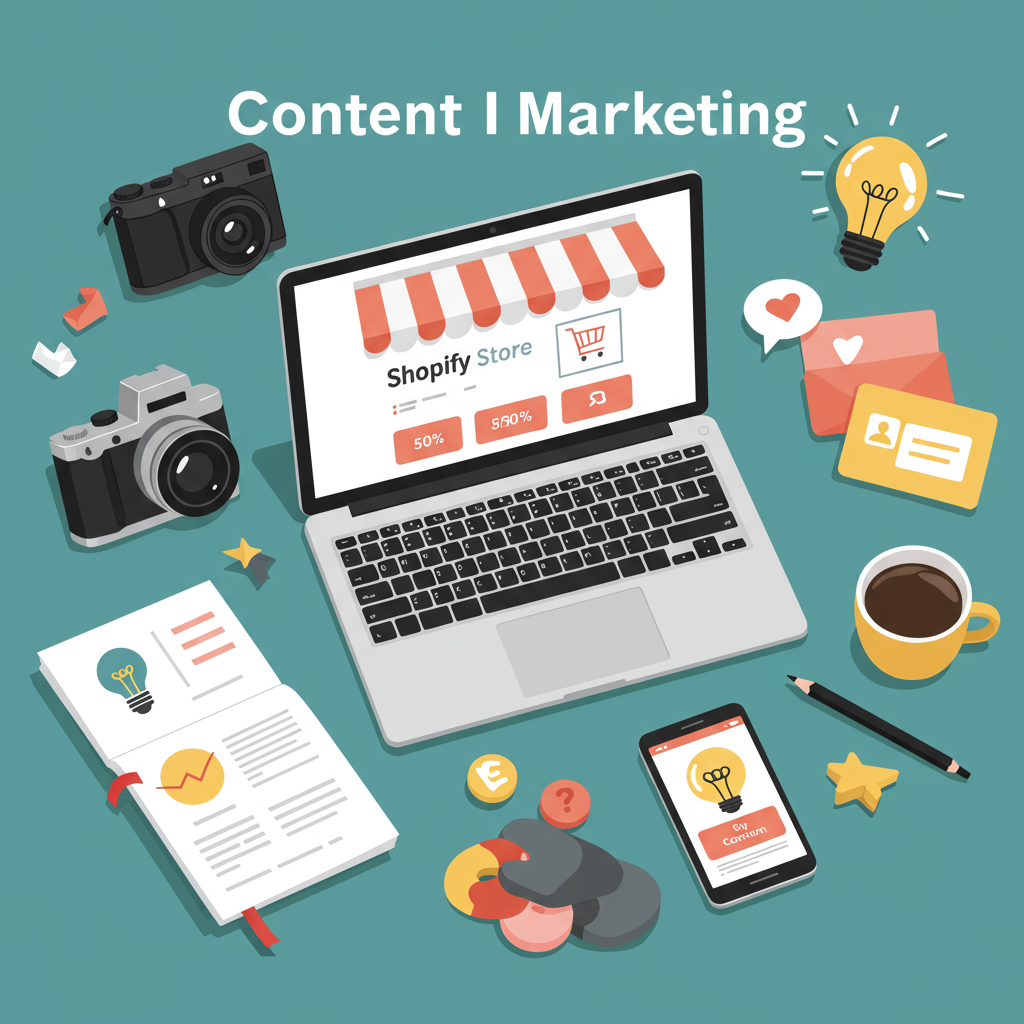Discover actionable ideas to attract, engage, and convert customers through compelling content.
As a Shopify merchant, you’ve built your store, stocked your products, and perhaps even run some ads. But are you truly connecting with your audience? I’ve seen countless businesses struggle to stand out in a crowded market, and often, the missing piece is a robust content marketing strategy.
Content marketing isn’t just about writing blog posts; it’s about creating valuable, relevant, and consistent content to attract and retain a clearly defined audience – and, ultimately, to drive profitable customer action. For your Shopify store, this means more than just product listings.
I believe content marketing is your secret weapon for building trust and authority. When you provide helpful information, entertain, or solve problems for your potential customers, you establish yourself as an expert, not just a seller. This trust translates directly into sales.
Every product has a story, and every brand has a voice. My goal for you is to leverage content to tell those stories, to connect emotionally with your audience, and to make your brand memorable. Let’s dive into some actionable ideas.
The cornerstone of many content strategies is the blog. A Shopify blog is an incredible tool for SEO, driving organic traffic, and educating your customers. Don’t just write about your products; write *around* your products.
Consider creating “how-to” guides. If you sell kitchenware, write “How to Bake the Perfect Sourdough.” If you sell fitness gear, “How to Start a Home Workout Routine.” Position your products as solutions within these guides.
Another powerful blog idea is product comparisons or detailed reviews. If you sell eco-friendly cleaning supplies, compare different types of sustainable materials. This positions you as knowledgeable and helps customers make informed decisions.
Lifestyle content is fantastic for building brand affinity. Show your products in action, integrated into everyday life. If you sell apparel, feature outfits for different occasions. This helps customers visualize themselves using your products.
Turn common customer questions into blog posts. “What’s the difference between X and Y?” or “How do I care for my new Z?” These posts directly address customer pain points and can rank well for specific queries.
Remember to optimize your blog posts for search engines. I always recommend thorough keyword research. Use relevant keywords naturally in your titles, headings, and body text. This helps Google understand what your content is about.
Your product descriptions on Shopify are prime content real estate. Don’t just list features; tell a story. What problem does this product solve? How will it make the customer’s life better?
I encourage you to use evocative language. Instead of “100% cotton t-shirt,” try “Crafted from the softest organic cotton, this tee feels like a gentle hug, perfect for your weekend adventures.”
In e-commerce, visuals are paramount. High-quality images and videos aren’t just nice-to-haves; they’re essential content that drives conversions.
Invest in professional product photography. Show your products from multiple angles, in different settings, and with scale references. I’ve seen conversion rates jump significantly with better imagery.
Video content is incredibly engaging. Create product demonstration videos, behind-the-scenes glimpses of your brand, or even short, engaging social media clips. Shopify allows you to embed videos directly on product pages.
Nothing builds trust like social proof. Encourage your customers to share photos and videos of themselves using your products. This user-generated content (UGC) is authentic and highly persuasive.
Run contests where customers submit photos, or simply ask them to tag your brand on social media. I find that showcasing customer content on your own channels is a powerful way to build community and encourage more submissions.
Your email list is a goldmine for content marketing. Don’t just send promotional emails; provide value.
Send out newsletters with your latest blog posts, exclusive tips, behind-the-scenes stories, or curated product collections. I always advise segmenting your list for more personalized content.
While transactional, abandoned cart emails can be content-rich. Remind customers of the value they’re missing, perhaps include a testimonial, or even a short video explaining a product benefit.
Social media is where your brand’s personality shines. It’s not just for selling; it’s for engaging, building community, and driving traffic back to your Shopify store.
Leverage features like Instagram Shopping or Facebook Shops to make your social content directly shoppable. This reduces friction and makes it easier for customers to convert.
Partner with micro-influencers whose audience aligns with your target market. They can create authentic content featuring your products, reaching new potential customers in a credible way.
For some niches, creating a podcast or hosting webinars can establish you as a thought leader. If you sell specialized equipment, a webinar on its advanced uses could be incredibly valuable.
Don’t let good content go to waste! I always recommend repurposing. Turn a blog post into an infographic, a video script into a series of social media posts, or customer testimonials into a dedicated landing page.
How do you know if your content is working? I urge you to track key metrics: website traffic, time on page, bounce rate, social media engagement, email open rates, and most importantly, conversions and sales attributed to content. Use Shopify Analytics and Google Analytics.
What are your thoughts on these content marketing strategies for Shopify? I’d love to hear if you’ve tried any of these or have other ideas that have worked for your store.
Content marketing is a marathon, not a sprint. It requires consistency, creativity, and a deep understanding of your audience. But the rewards – increased brand awareness, customer loyalty, and ultimately, more sales – are well worth the effort. Start small, experiment, and watch your Shopify store flourish.






